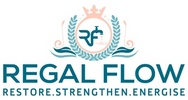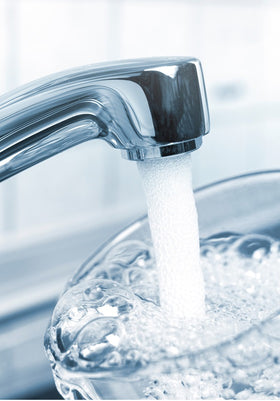
Tankless Reverse Osmosis Systems: A Smart, Space-Saving Solution for Clean Water
Tired of bulky water filters cluttering your kitchen? The tankless reverse osmosis system is your sleek, space-saving hero. No more waiting for tanks to fill—just instant, purified water. Plus, if you're into countertop dispensers and reverse osmosis, this tech-savvy solution is a game changer. In Reverse Osmosis: Specialised Topics and Advanced Insights, we break down why tankless systems are leading the way in modern water filtration.
Understanding Tankless RO Systems
Imagine walking into your kitchen and having instant access to pure, clean water with no waiting for a tank to fill up. That’s the magic of a tankless reverse osmosis (RO) system. Gone are the days of bulky water filters taking up valuable space under your sink. These sleek, on-demand units offer a compact and efficient way to purify your drinking water, perfect for homes where space is tight. Let’s explore how they work and why they might just be the solution you’ve been looking for.
How They Work
Tankless RO systems work on demand, meaning no storage tank is involved. Instead of waiting for water to be filtered into a tank, it’s purified instantly as you need it. The process starts with the water being passed through a sediment filter to remove larger particles like rust and dirt. Next, a carbon filter eliminates chlorine and unpleasant odours. Finally, the water passes through the RO membrane, which removes harmful contaminants such as heavy metals and salts. The result? Fresh, purified water straight from the tap—no waiting around for a tank to fill.
Benefits Over Traditional Systems
There’s a lot to love about tankless RO systems, especially if you’re fed up with the bulky tanks of traditional systems. For one, they save a tonne of space under your sink, which can be a game-changer in smaller kitchens. You also get purified water instantly, with no need for a tank to store and wait for filtration. Plus, these systems are generally more energy-efficient than traditional models because they don’t require power to keep water stored and ready for use. They’re perfect for busy families who want reliable water quality without the hassle.
Advantages of Tankless RO Systems
Tankless RO systems don’t just offer convenience—they come with a bunch of practical advantages that make them a top choice for modern homes. Let’s take a look at how these systems stand out from the crowd.
Space-Saving and Efficiency
One of the most obvious benefits of a tankless RO system is the space it saves. Traditional systems need a large tank to store purified water, which can take up a significant amount of space under the sink. With tankless models, you get the same high-quality filtration, but in a much more compact unit. Whether you’re living in a flat or have a kitchen with limited cupboard space, these systems fit neatly in smaller areas, leaving you with more room to store other essentials.
Instant Water Delivery
We’ve all been there—waiting for a tank to fill up, only to realise it’s taking longer than expected. With tankless systems, you can say goodbye to that. As soon as you turn on the tap, the water is instantly filtered and ready to drink. No more waiting around for filtered water to be stored. This feature is especially useful for busy households where everyone is rushing for a quick glass of water or a cup of tea.
Considerations and Limitations
While tankless RO systems have lots of perks, they’re not without a few things to keep in mind. Here’s what you need to consider before making the switch.
Flow Rate and Pressure
Although tankless systems are efficient, they tend to have a slower flow rate compared to traditional models. This means you might have to wait a little longer for a glass of water. The flow rate can be affected by water pressure, so it’s essential to make sure your home’s water pressure is within the recommended range—typically between 40 and 60 psi. If your water pressure is low, the system might not function optimally, which could affect its performance.
Initial System Cost
The upfront cost of a tankless RO system can be higher than that of traditional systems. However, this is often offset by the long-term savings on energy bills, as these systems don’t need to keep water constantly purified in a tank. Plus, you won’t need to worry about the maintenance costs of a bulky tank. While the initial investment might seem steep, it’s a worthwhile expense for those looking for a more efficient, space-saving solution.
Choosing the Right Tankless System
Not all tankless RO systems are created equal. When shopping for one, it’s important to consider a few key features to make sure you pick the best system for your home.
Key Features to Consider
When choosing a tankless RO system, look for a high-quality RO membrane and a multi-stage filtration process. This ensures the system can effectively remove harmful contaminants from your water. It’s also worth considering units that offer additional features, like a built-in heater for hot water delivery. Some models even offer smart technology, allowing you to monitor the system’s performance and water quality remotely.
Brand and Model Comparisons
When it comes to tankless RO systems, there are a few trusted brands leading the way, including Waterdrop Filter, Frizzlife, and Ecowater. These brands offer reliable models with varying features to suit different needs. When comparing models, consider factors like flow rate, filtration stages, ease of installation, and warranty. It’s always a good idea to read customer reviews to get a feel for how well a system performs in real-life scenarios.
Installation and Maintenance Tips
Now that you’ve chosen the perfect tankless RO system, it’s time to install and maintain it. With a few simple steps, you’ll be set up and ready to enjoy clean, filtered water on demand.
Step-by-Step Setup Guide
Setting up a tankless RO system is straightforward, especially with the instructions that come with most models. Start by checking your water pressure to ensure it meets the recommended range (typically 40-60 psi). Next, install the system under the sink or in another suitable location, connecting it to the cold water supply. Attach the purified water line to your faucet, and you’re good to go. Most models come with easy-to-follow guides, but if you’re unsure, it’s always worth calling in a professional to ensure everything’s set up correctly.
Regular Maintenance Practices
Maintaining a tankless RO system is relatively easy. You’ll need to replace the filters every 6-12 months, depending on your water usage. Cleaning the RO membrane annually is also recommended to keep everything running smoothly. Many systems come with filter change reminders, making it even easier to stay on top of maintenance. Regular upkeep ensures that your system continues to deliver pure, fresh water and lasts for years to come.
Addressing Common Concerns
As with any system, there are a few common concerns that can pop up with tankless RO units. Here’s how to address them.
Water Quality and Taste
Tankless RO systems are designed to purify your water effectively, but some users may notice a difference in taste due to the filtration process. If you’re concerned about flavour, consider adding a post-filtration stage, like a mineral filter, to enhance the taste. This is a simple solution that can improve the overall drinking experience.
System Performance
Although tankless systems are generally reliable, some users may notice a slight drop in performance if their water pressure is inconsistent. If you find that your system is struggling to keep up with demand, consider investing in a booster pump to maintain optimal pressure. It’s also worth remembering that these systems are built to deliver purified water on demand, so a slight delay in delivery is normal.
Conclusion: Efficient Water Purification with Tankless RO
Tankless reverse osmosis systems offer a modern, efficient way to get clean, purified water whenever you need it. They save space, reduce energy consumption, and provide a more sustainable solution for families and individuals who care about both convenience and the environment.
Key Takeaways on Tankless Systems
Tankless RO systems are compact, energy-efficient, and offer instant access to purified water. They’re perfect for smaller homes or kitchens where space is limited, and they eliminate the need for bulky storage tanks. While the initial cost may be higher, the long-term savings and convenience make them a smart investment. If you’re looking for a space-saving, efficient way to improve your water quality, a tankless RO system is definitely worth considering. With the right system, you’ll enjoy instant, purified water with minimal maintenance, all while reducing your energy consumption. Choose a trusted brand, keep up with regular maintenance, and you’ll be set for years of clean, fresh water.
More Reverse Osmosis info we think you'll love
Reverse Osmosis Filter Replacement Service
Reverse Osmosis Power Consumption
Reverse Osmosis System Connections
Reverse Osmosis System Water Quality
When to Change Reverse Osmosis Filters
Reverse Osmosis Countertop System
Reverse Osmosis Water Filter for Aquarium
Can Reverse Osmosis Remove Bacteria?
How to Fix Low Water Pressure in a Reverse Osmosis System
How to Remove Air from a Reverse Osmosis System



Leave a comment